
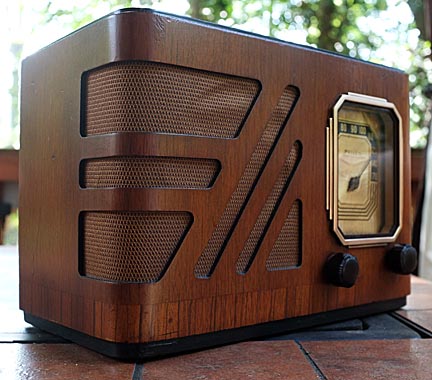
Philco 38-12T
Although Philco's 1938 Model 38-12 was an entry level radio, it was, like most Philco radios, a good performer with a nice wood cabinet, lighted dial, five tubes and a transformer. The Model 38-12 was available in several cabinet styles. There were two wood cabinets, a squared off plain wood cabinet, and the nice Art Deco styled cabinet shown here, with inlaid zebra wood along the bottom edge and another strip along the top of the cabinet. It was also available in a painted ivory wood cabinet, and also in a brown or white Bakelite cabinet. The price was $22.50, the equivalent of about $400.00 in 2018, not exactly a cheap radio during the Great Depression.
This radio was an eBay find I bought in 2008 for a prop in the photo shown at right. It was ten years before I finally got around to restoring it. The cabinet was in pretty good condition, but loose at the bottom. The speaker cloth was damaged. After re-glueing the loose parts of the cabinet, I stripped the old finish from radio and touched up the stain, than applied several coats of new lacquer and toner. I replaced the speaker cloth. The dial face has some wrinkles. The dial bezel was stripped and re-lacquered.
The chassis was completely restored. All the capacitors were replaced, and all the resistors except one were replaced. One tube was bad. After restoration, the radio only received one station no matter where the tuning capacitor was turned. I determined that the rubber grommets that isolated the tuning capacitor were deteriorated and the tuning capacitor was shorted out, so I had to remove it and replace the worn out grommets. After that, the radio played nicely.
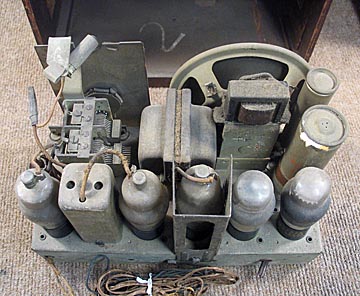

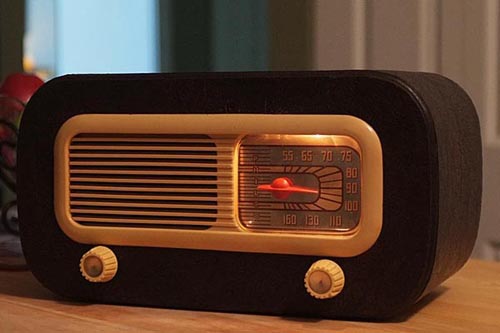
1948 Philco 48-206 leatherette AA5 AM receiver. This is an updated version of the Philco 47-204 radio shown at the bottom of this page. The radio did not play due to two dead tubes and some badly deteriorated capacitors, but after a couple of new tubes and a recap, it played just like new, with that distinctive Philco sound. I can't really describe it, but all Philcos have a distinctive sound to my ear, almost as if they have a tiny bit of reverb built in.
The cabinet was an easy clean-up. After leather cleaner, I gave it a coat of brown Kiwi Scuff-Kote, followed by a hand polishing. The dial cover was missing, so I made a new. A new dial light finished up the restoration.
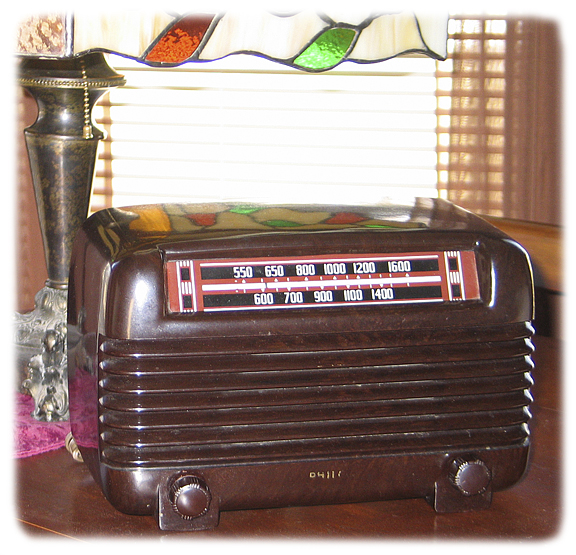
1946 Philco 46-250 bakelite AA5 AM receiver. I received this very nice cabinet from my brother for Christmas, 2009. I began searching for a chassis to fit in it and in early March found a model 46-250 on Ebay with a badly damaged cabinet. The electrolytic caps had been previously replaced and the radio played very well, despite a rusty chassis and a number of rips and gaps in the speaker. I used Naval Jelly to remove the rust from the chassis, and then painted it. I replaced the discolored dial background with a new white background. I repaired the speaker and replaced the other wax capacitors and installed a new AC cord. I put the chassis in my cabinet, and now have a very nice looking radio that plays like new.
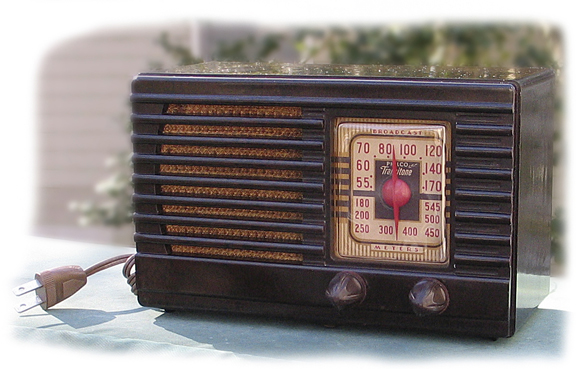
1940 Philco PT-25 five tube AM receiver. My brother gave me this radio for Christmas in 2009. The cabinet was in very nice shape, but there was a lot of rust on the chassis, the power cord was rotted away, and the dial pointer didn't turn. I pulled the chassis and recapped it, and replaced one out-of-tolerance resistor. All the tubes tested good. They are all Philco tubes. The pilot/dial lamp tested OK as well. I used Naval Jelly and a wire wheel in a Dremel tool to remove the rust from the chassis. The dial cord was intact, but stretched, so it was slipping on the tuning knob axle. I restrung it with new dial cord. The speaker cone had also come unglued from its basket, so I had to fix that. When I attached an antenna and powered up the radio, it played beautifully, with the rich sound characteristic of these little Philco's. I cleaned the cabinet with Brasso and Novus, then buffed it with Carnauba wax. I replaced the yellowed dial cover with a new one from Art Deco Radio, and reinstalled the chassis. Its only flaw is that most of the back of the radio is missing.
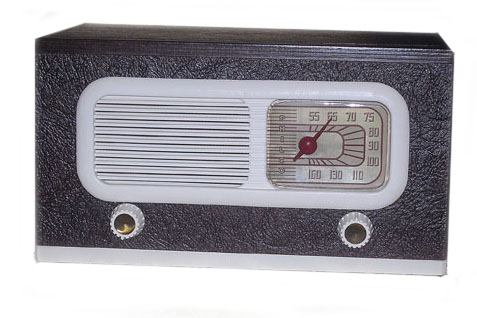
This is an attractive leatherette covered radio I found in an antique mall. The top of the radio was splattered with white paint, the leatherette scuffed, and the plastic dial cover was brittle and yellow with age. I spent hours picking off the paint with the point of an x-acto knife, then used mineral spirits for final cleaning. I renovated the leatherette with brown shoe polish and scuff repair. I made a new plastic dial cover. After replacing the capacitors and power cord, this radio played well. It has a very nice sounding speaker.